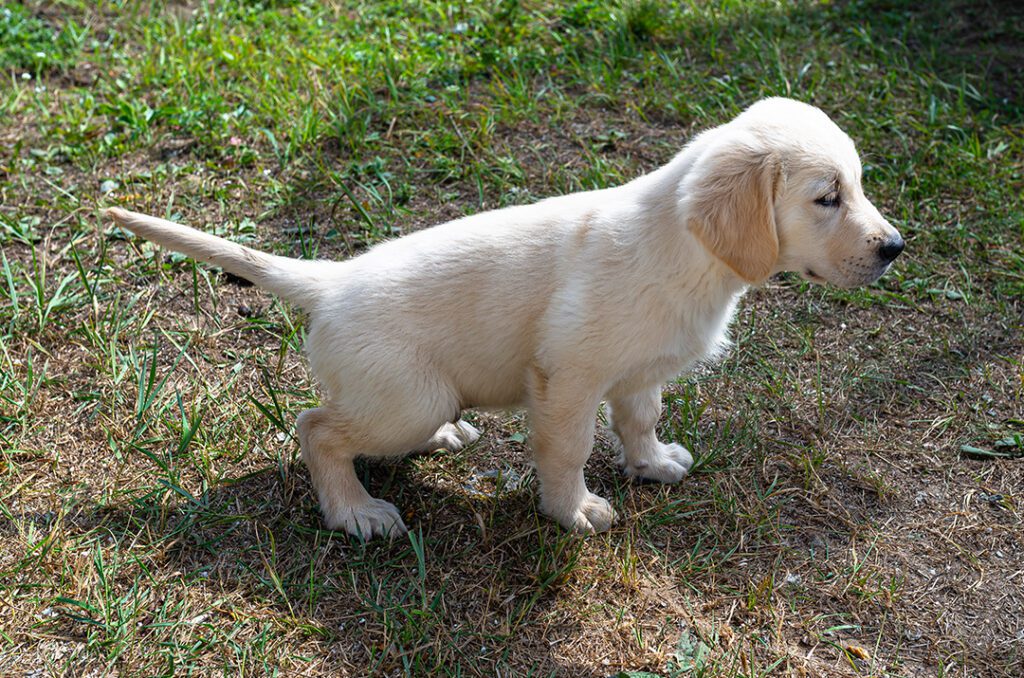
More dogs end up in shelters every year due to house training problems than any other behavior issue. House training is fairly easy if you follow a few simple rules, 5 rules to be precise.
House Training Rules
House Training Rule 1
Anytime your dog is in the house with you, he/she needs to be watched like a hawk. This means regardless of what you may be doing, you need to keep one eye on your dog and one eye on whatever else you may be paying attention to. If you can’t keep one eye on your dog at all times, then you must confine him/her. Confining your dog means putting him/her in a crate or in a kennel run or some type of enclosure where he/she cannot make a mistake– which in this case is urinating or defecating in the house. In sum, you must never let your dog have free reign of the house until your dog is 100% proofed, and until that time, you must never take your eye off your dog if he/she isn’t confined in a crate or an enclosure.
House Training Rule 2
If and when your dog has an accident– because you were keeping one eye on your dog and one eye on whatever else you were doing– you will always be in a position to interrupt the behavior. Anytime your dog has an accident or decides to defecate or urinate in the house, he/she needs to be interrupted, and the interruption must be immediate. Care should be given not to startle or frighten your dog because that can cause him/her to not want to eliminate in your presence.
House Training Rule 3
The third key to housebreaking is to establish a place outside—a specific spot–where your dog will go to eliminate. In conjunction with this, you should also teach a command so that your dog learns to defecate and urinate on command, i.e. “get busy” “go potty” etc… When you see that your dog has a need to eliminate, immediately bring him/her outside to your specific predetermined spot. Once you get to that spot, you need to walk your dog back and forth and repeat the command to eliminate. Once your dog begins to either urinate or defecate continue repeating the command “get busy, get busy, get busy”. This forms a close association with the behavior and the command, and so the two become linked. As soon as your dog finishes “taking care of business,” immediately give lavish praise and a treat. This is very important, the reward must be immediate, not once your dog in back inside the house. Another benefit to taking your dog out to one specific spot is that dogs become creatures of habit. Thus, your dog develops the habit of going to that one spot, and as long as that specific spot is outside (or in your predetermined area) that is where he/she will want to go to eliminate. Many times, dogs that have a housebreaking problem will return to the same spot to go to the bathroom. Unfortunately, this spot is usually in the living room, on the bed, or in some area where you don’t want it to be. By establishing a specific spot in the yard, you condition your dog to want to go to that spot, and so he/she will only really feel comfortable eliminating in that specific spot. Another benefit of associating a command with the action of elimination is that you are able to take your dog over to the curb, or behind a building, and have him/her eliminate on command. Be sure to give your dog extra time to explore after they have urinated and/or defecated. If you bring them indoors right after they go, they can learn to hold it and use the time outdoors to explore. Then, once back in the house they “use the facilities.” Allowing them ample time to explore after eliminating outdoors can help to avoid this common problem.
House Training Rule 4
The fourth key to successfully housebreaking your dog is to buy and use an odor neutralizer or an odor eliminator. There are products you can buy on the market for this. The ones I use are called, Nature’s Miracle or Anti Icky Poo. These cleaners contain an enzyme that breaks down urine and fecal residue and completely eliminates the odor. It can be used on your carpet and can lift a stain as well, so in a sense, serves a double purpose. But more importantly, it eliminates the urine smell from your furniture. This is necessary because, if you don’t eliminate the urine smell, your dog will smell the scent he has left previously and will want to go back because that’s his “familiar place.” By using the odor neutralizer, you are able to lift and get rid of that elimination spot which was chosen by your dog. And of course, you are now in a position to substitute his new elimination spot outside. In the past, many dog trainers would suggest that you make your own odor neutralizer by mixing one part ammonia to four parts water. This doesn’t work very well, for one simple reason: there is ammonia in your dog’s urine! By using ammonia as a cleaning agent, there is the distinct possibility that your dog will be attracted to that spot, smell the ammonia, and re-mark his spot. So you won’t really be achieving your goal of eliminating the odor or neutralizing the scent. If you’re into homemade remedies, or you’re on a tight budget, you might try: One part white vinegar to four parts water. I have been told this concoction works very effectively. Personally though, I prefer the store-bought formulas, because I have no desire to make my living room smell like vinegar, just to save a few bucks!
House Training Rule 5
The fifth and final rule for successfully house training your dog is to set up a feeding and watering schedule that is very rigorous and consistent. You want to make sure that your dog is fed and has access to water at the same time every day. When you do this, you’ll notice that your dog will start needing to go out and eliminate at the same times every day. For some dogs, this will be immediately after they eat or drink. For other dogs, it may take a while. If you don’t feed your dog on a consistent schedule, you will be perpetually playing a guessing game. As for water, I do not recommend free access to water until the dog is completely house trained. If you give your dog free access to water when in the house, you will never develop any consistency in terms of knowing when he has to urinate. If you follow these five steps religiously, you will be well on your way to having a completely house trained dog. On average, I find that the speed in which it takes to house train a new dog or a puppy that is over 12 weeks is between 10 to 14 days. It can be faster or it can take longer depending on how religiously you follow these five rules, as well as other factors such as your dog’s age, breed, and temperament. But with practice, consistency, proper timing and motivation, house training can be accomplished quickly and easily.

